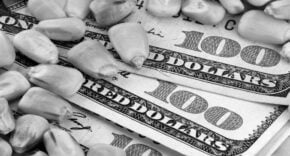(Kitco News) The gold market was down nearly $30 Tuesday as markets awaited news on U.S. debt ceiling negotiations.
If a U.S. default sounds catastrophic, that’s because it is, U.S. Treasury Secretary Janet Yellen said Tuesday, describing a severe downturn, millions of unemployed, and a 45% selloff in the stock market.
“In my assessment – and that of economists across the board – a U.S. default would generate an economic and financial catastrophe,” Yellen said at the Independent Community Bankers of America (ICBA) 2023 Capital Summit. “A default would crack open the foundations upon which our financial system is built. It is very conceivable that we’d see a number of financial markets break – with worldwide panic triggering margin calls, runs, and fire sales.”
Yellen warned that the White House Council of Economic Advisers’ simulated impact of a protracted default does not rule out as severe a downturn as the Great Recession.
“It finds that it could lead to a downturn as severe as the Great Recession. In its simulation, over 8 million Americans lose their jobs. Business and consumer confidence take a substantial hit. The value of the stock market is slashed by about 45 percent – wiping out years of retirement and other household savings,” she described.
Yellen still sees June 1 as the date the Treasury could run out of cash. She also warned that the U.S. is already paying a high price for not raising the debt ceiling.
“We have already seen Treasury’s borrowing costs increase substantially for securities maturing in early June,” Yellen said in a letter to Congress Monday.
And there is no progress being made between U.S. President Joe Biden and House Speaker Kevin McCarthy. “We are nowhere near reaching a conclusion,” McCarthy said Monday.
Republicans are willing to raise the debt cap but only conditional on sweeping spending cuts, which Democrats oppose.
All eyes are on the Tuesday afternoon meeting between Biden and McCarthy to see if there will be any new progress in trying to raise the U.S. government’s $31.4 trillion debt ceiling to avert an economically catastrophic default.
In the meantime, the precious metals market is waiting on the sidelines for a new catalyst. On Tuesday, China’s economic slowdown weighed on demand expectations for precious metals. Also, a firmer U.S. dollar index with weaker crude oil added downward pressure on gold.
“Gold is lower as Wall Street awaits a meaningful update with debt ceiling talks,” said OANDA senior market analyst Edward Moya. “Too many risks remain on the table for investors to go offensive. Risk aversion could get a boost from regional banking fears, debt ceiling drama, and a weakening consumer, but it will likely come from a new catalyst.”
Investors turn to gold for protection
There are clear signs that investors are turning to gold as a hedge against a potential default, according to Bloomberg’s latest Markets Live Pulse survey.
Gold was the top choice for investors, with over half of those surveyed choosing the precious metal as protection against the debt ceiling turmoil. All other options, including U.S. Treasuries, were trailing far behind.
A recent Gallup survey also revealed that Americans’ approval of gold as the best long-term investment nearly doubled from last year.
The view that gold is the best long-term investment jumped from 15% in 2022 to 26% — the highest levels since 2012. Gold has overtaken stocks as the second-most preferred investment and has come close to the number one spot, with more than a quarter of Americans viewing gold as the best long play.
“Gold tends to be the beneficiary when confidence levels in both real estate and stocks are down. This is typically during times of economic recession or uncertainty, as happened around the time of the Great Recession, and is happening again today,” Gallup said.
What’s next for gold?
A key new driver for gold this year is ETF demand, which is finally recognizing the value of the precious metal amid renewed recession fears, said Australia and New Zealand Banking Group (ANZ) in its latest note.
“We expect gold ETF flows to turn positive for the rest of this year,” the strategists said Friday. “U.S. banking sector issues, elevated interest rates and uncertainty around the debt ceiling are dampening the economic outlook and boosting safe-haven demand for gold.”
ANZ sees gold at $2,100 an ounce by the end of this year and $2,200 in the second half of next year. According to the bank, any price dips will be viewed as buying opportunities.
Gold fell below $2,000 an ounce on Tuesday, with June Comex gold futures last trading at $1,994.60, down 1.39% on the day. But many analysts see gold recovering and maintaining its levels above $2,000 an ounce due to the debt ceiling issue.
“In view of the ongoing dispute over the U.S. debt ceiling, the gold price will probably hold its own above the $2,000 per troy ounce mark for the time being, living up to its reputation as a safe haven,” said Commerzbank analyst Thu Lan Nguyen. “After all, any debt default by Washington, even if only temporary, would doubtless have serious negative repercussions for the U.S. economy, which makes it more likely that monetary policy will be loosened – to a greater extent than is already priced in on the market – and make gold more attractive in relative terms as a non-interest-bearing investment.”










